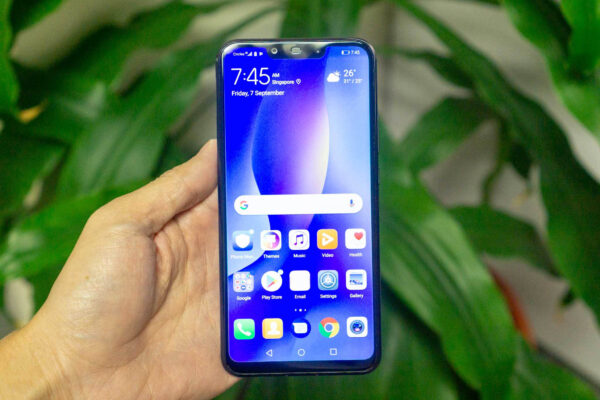
If the new iPhones are too expensive, or even the premium flagship Huawei smartphones, you should know that there are plenty of good mid-range options out there. Huawei’s nova 3i, for example, is all-around quite impressive despite asking little from your wallet.
A common theme we’re seeing in just about all the premium flagship smartphones this year involves the display notch, more elongated aspect ratio of the display, and photo-taking capabilities centred around AI. The Huawei nova 3i has all of that, but instead of premium prices, brings you a very affordable smartphone that does not compromise on design and looks.
With dimensions measuring 157.6 x 75.2 x 7.6 mm, the Huawei nova 3i is quite thin and compact. The all-glass back is beautiful, though that glossy shine is surely going to attract fingerprints. I have the back colour version for this review, and while it looks good, it’s less striking that the other Iris Purple option which sports a beautiful purple gradient colour underneath the glass back.
The display on the Huawei nova 3i measures 6.3-inches across, with a resolution of 1080 x 2340 pixels, 19.5:9 aspect ratio. The IPS LCD panel is very bright and crisp with very vibrant colours.
The Huawei nova 3i supports dual nano-SIM cards. The SIM card tray is on the left of the device. You can put a microSD card in place of the 2nd SIM, if expandable storage is needed.
On the right side, you’ll find the usual volume rocker and power/wake button.
I’m a little disappointed to still see a Micro-USB port on the bottom of the Huawei nova 3i. We should all be using USB Type-C by now. The 3.5 mm audio jack is still present.
On the back, you’ll find the fingerprint scanner. You’ll also see the dual rear camera setup, using a 16 MP f/2.2 sensor with phase-detection auto-focus and a 2 MP depth sensor. The selfie camera on the front also features a dual camera setup, using a 24 MP f/2.0 sensor and a 2 MP depth sensor. That’s a total of four cameras on the Huawei nova 3i.
The AI-powered camera capabilities are quite comprehensive. The camera can recognise over 200 scenes across eight categories. There are numerous shooting modes for AR, portrait, time-lapse, as well as one for full-manual “pro” shooting.
I found the camera is be very capable. In fact, I thought Huawei nova 3i might perhaps be taking the image enhancements a wee bit too far.
Under the hood, the Huawei nova 3i is powered by the company’s own Kirin 710 octa-core processor. This is a 12nm processor comprising 4x Cortex A73 at 2.2 GHz and 4x Cortex A53 at 1.7 GHz. It is accompanied by 4 GB of RAM and 128 GB of storage.
Battery capacity on the Huawei nova 3i is 3,340 mAh.
Geekbench 4 scores for the Huawei nova 3i is as follows:
- Single-core: 1573
- Multi-core: 5388
- Compute: 3947
- Battery: 2920
The Huawei nova 3i performs comparatively well against other mid-range smartphones. Battery performance, however, seems below par.
For connectivity, the Huawei nova 31 offers 802.11 b/g/n Wi-Fi, GPS with GPS, A-GPS, GLONASS, BeiDou, and Bluetooth 4.2. There is, unfortunately, no NFC.
You’ll get Huawei’s EMUI 8.2.0, built on Android 8.1.
Huawei has a snazzy new GPU Turbo feature which claims to deliver up to 60% improved GPU performance while reducing battery consumption by up to 30%. This update is supposed to be arriving any time now.
Included inside the Huawei nova 3i retail box, you’ll find a USB charger, Micro-USB cable, SIM eject tool, earbud-style headphones, a jelly case, and a screen protector already applied on the device display.
The Huawei nova 3i retails at S$398, available at all Huawei Concept Stores, local telcos and authorised retailers.
Conclusion
The Huawei nova 3i is an excellent smartphone in the mid-range device category.
Pros:
- Very attractive design
- Excellent display
- Very capable camera
Cons:
- Outdated Micro-USB port
- Not waterproof
